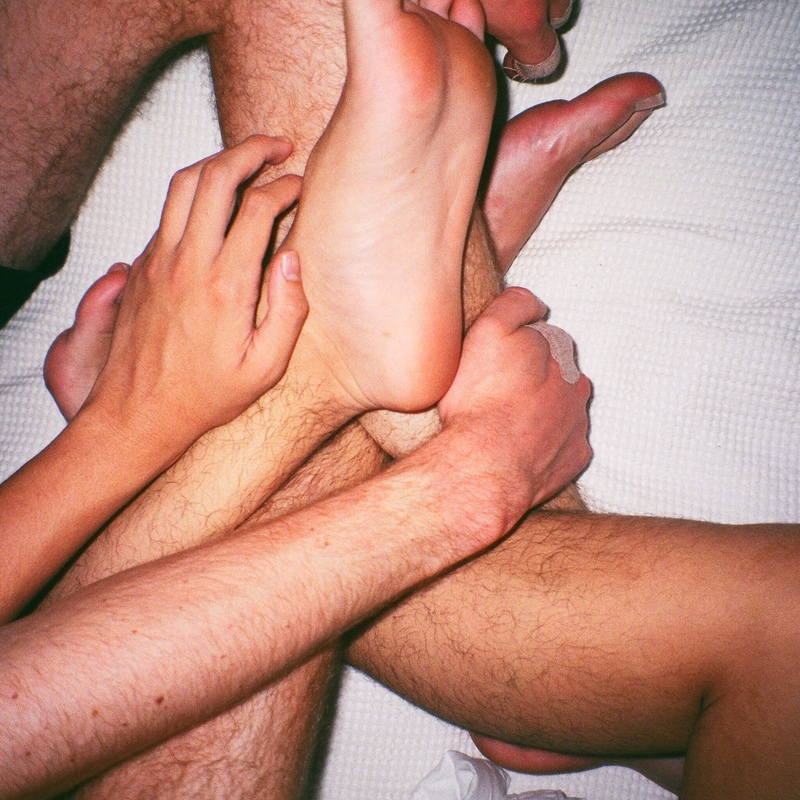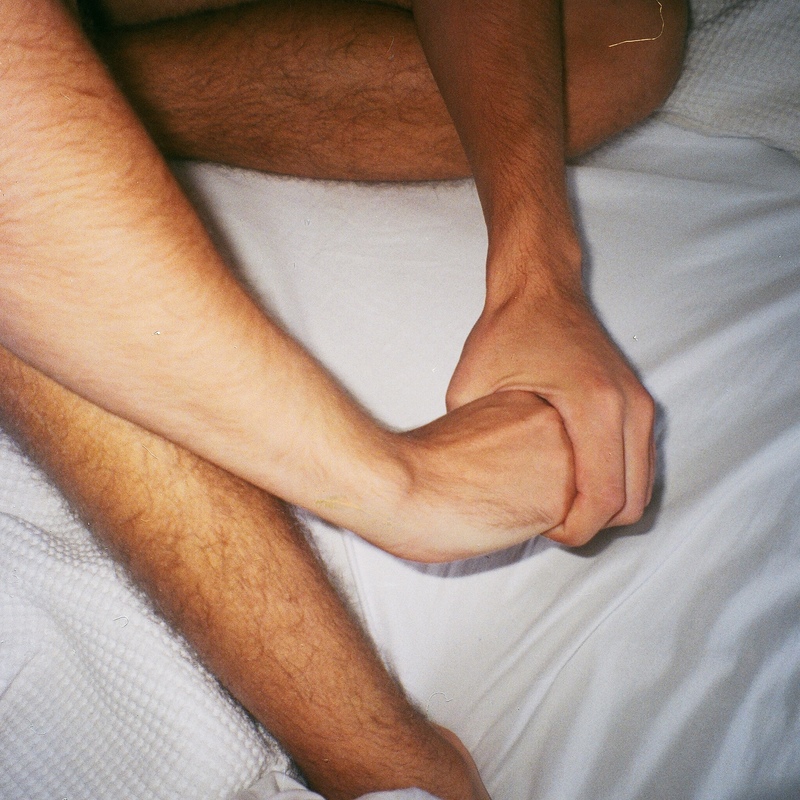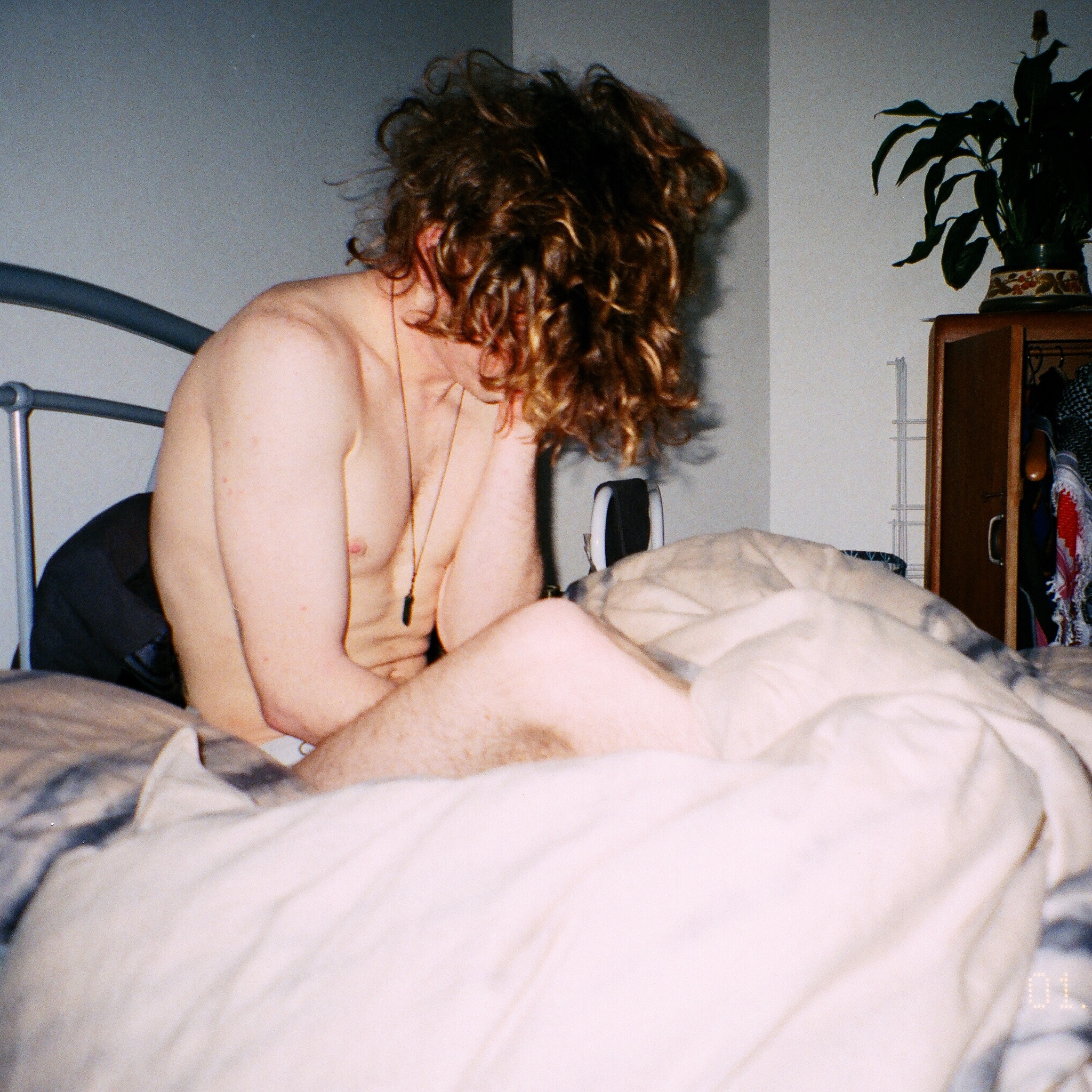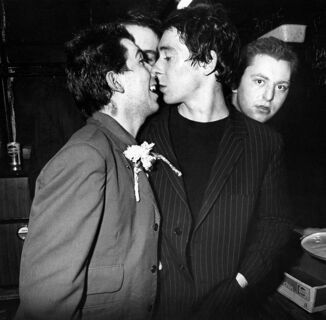*Trigger warning: Sexual assault*
In 2017, Robert Tennent experienced a sexual assault that led to a period of celibacy. During that time, he attended counseling to be able to introduce sex to his life again.
It took five months, butTennent finally met someone he trusted and they had sex. Afterward, he took out his camera and snapped a photo.
Now, almost a year after he began taking photos of the men with whom he was intimate, Tennent compiled the photos into Come Back to Bed, a photo book chronicling his romantic and intimate entanglements after the trauma of sexual assault.
Tennent spoke to INTO about the very first photo he took, queer power dynamics and allowing yourself to feel pleasure.
Robert, take me back to the very first time you took a picture of a man you were intimate with after five months of celibacy. What was the thought behind taking a picture of the guy?
He was the first person I really clicked with after my assault. He was really handsome and we got along like we’d know each other for months. Unfortunately, he lived in a different country, so me taking the photo was simply to remember him and remember the night we had together. From there I developed my pictures and just kept them on my phone.

Your photos definitely celebrate the body. What do you think they have to say about the body as both a site of trauma but also a site of pleasure?
The body is so beautiful to me. The ways muscles flex in different positions and how light bounces off his arms and his chest. It’s a contrast―how can something so beautiful, do something so awful? I didn’t associated the body as a site of trauma, I associated trauma with the act of sex. It took me a really long time to be able to let someone touch me again. But after the first few times I felt like the pleasure aspect came back.

As the photographer, why did you choose the setting of the bedroom. Obviously, you were intimate with these men, but why that moment in the bedroom as opposed to taking a photo of them elsewhere?
Because it’s where we were the most vulnerable with each other. We talked for hours, shared stories, kissed, made love. I got to know these men really well from the conversations we had before and after sex. Being completely naked with someone else creates a bond and especially when there is sexual tension and passion.

What do you think your art says about the possibility of pleasure after trauma?
It’s a reality. You can certainly feel pleasure again. As hard as it may seem at the beginning, over time it gets easier. I named the book Come Back to Bed for two main reasons. These were words I had heard many times, when you wake before your lover, when they wake up before you do. You want to get back to the place where you were the closest, literally. And the second reason was because it was a message to my younger self. The reality of coming back to bed or being intimate again was possible over time.

Right now, we’re in the moment of #MeToo and #TimesUp and a lot of those conversations in the queer community have been about how queer power dynamics are different. How do these photos speak to the nature of power dynamics in queer relationships?
In the queer community, it’s less about gender and more about race. My mother is Vietnamese and my father is from New Zealand, therefore, I am mixed. I have had experiences where I have been disregarded because of my race. There is also a lot of femme shaming in the gay community and that comes into play with power dynamics. These images more so speak to power dynamics between dominant and submissive partners. There are images where I am the submissive figure and a few where I am quite dominant.

In most of your pictures, the bodies are obscured in some way. They are kind of scrunched inward or the person is lying on their tummy. Did you position them this way or did your models choose their own positions? What do you think these positions say about intimacy and bodies?
These images were mainly taken spontaneously where I’d say “Oh, that looks good―don’t move.” Some were taken during, before, and after sex. There are images where we had just finished and I pulled my camera out and took a photo of him catching his breath. Some of these photos are extremely intimate because they were captured during the moment and our bodies are intertwined. I did ask a few of them to get into certain positions because I wanted to play with shape and watch how the body would react to different positions.

What did you learn about your own trauma by going through this project?
There are things in life that are just going to happen despite what you do. The sun will rise and it will set―until it suddenly doesn’t, and there is nothing I can do about it. I believe in fate. I am responsible for my feelings and I am responsible for how I choose to heal or better myself.
The project taught me that time off is healthy and should be done more often, to keep myself sane and happy.

Come Back to Bed is currently available online.
All photographs courtesy ofRobert Tennent.
Help make sure LGBTQ+ stories are being told...
We can't rely on mainstream media to tell our stories. That's why we don't lock our articles behind a paywall. Will you support our mission with a contribution today?
Cancel anytime · Proudly LGBTQ+ owned and operated
Read More in Culture
The Latest on INTO
Subscribe to get a twice-weekly dose of queer news, updates, and insights from the INTO team.
in Your Inbox















